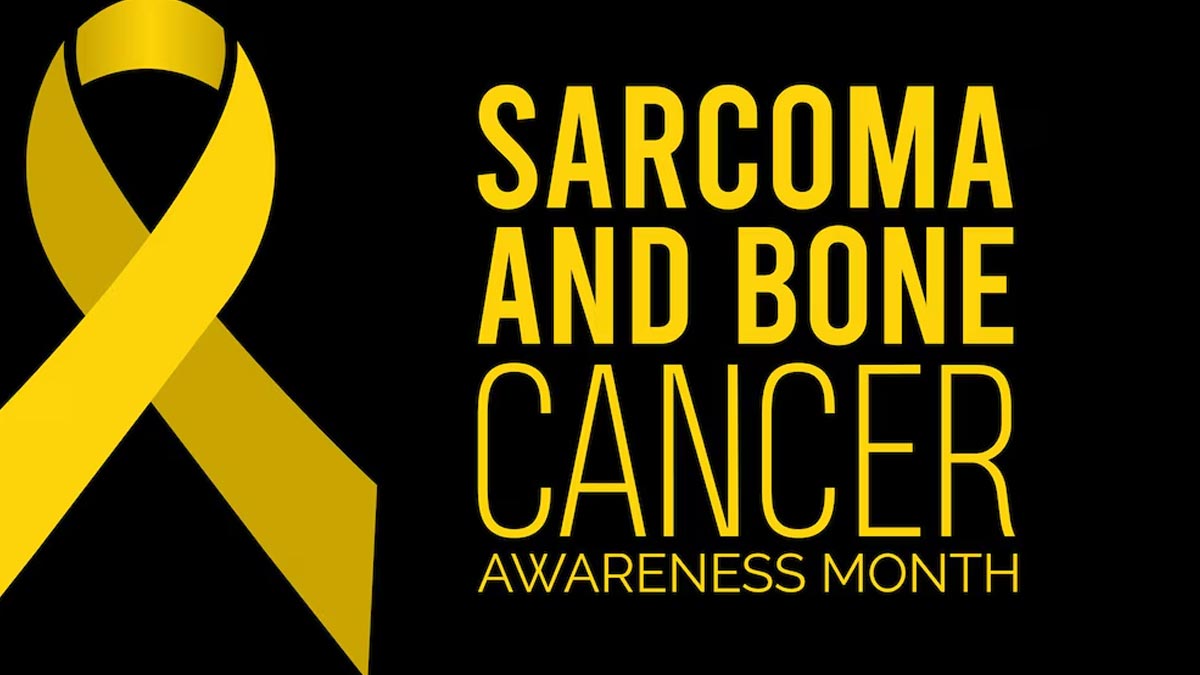
Bone sarcoma, also known as osteosarcoma, is a rare and complex form of cancer that primarily affects the connective tissues in the body. Unlike other common carcinomas, sarcomas arise in the bones, muscles, tendons, cartilage, nerves, and blood vessels, most frequently occurring in the arms and legs. This type of cancer is particularly prevalent among teenagers and young adults due to their rapidly growing bones. Despite its rarity, understanding osteosarcoma is crucial for early detection and effective treatment.
To understand more about bone sarcoma, OnlyMyHealth team interacted with Dr Rohit Lamba, Head of Department and Senior Consultant, Bone, Joint Replacement and Orthopaedics, SHALBY Sanar International Hospitals, Gurugram.
Sarcomas, as Dr Rohit Lamba explains, "are one of the rarest and most complex cancers. They are considered different from other common carcinomas because they occur in connective tissues. These types of tumors are most common in the bones, muscles, tendons, cartilage, nerves, and blood vessels of your arms and legs". Among the various types of sarcomas, bone sarcoma, or osteosarcoma, stands out due to its unique characteristics and the population it affects.
Osteosarcoma is primarily seen in teenagers and young adults, coinciding with periods of rapid bone growth. According to the Indian Council of Medical Research (ICMR), the incidence of osteosarcoma in children ranges from 3.6% to 14.8%. Another ICMR study found that osteosarcomas are more common in males than in females during adolescence, with a male-to-female ratio of 1.4:1.

Understanding Osteosarcoma
Osteosarcoma typically arises in the long bones of the body, such as the thigh bone, leg, and arm. These tumors can be aggressive, often presenting as painful, swelling masses that may initially be mistaken for injuries. Dr Lamba shares a case to illustrate the symptoms: "An adolescent child develops acute pain after a fall that increases particularly with activity. Over the next few weeks, swelling increases around the injury with the prominent appearance of veins. The swelling is warm and tender to touch. Parents thought that it’s just an injury and the swelling will subside, but it turns out to be a tumor."
In advanced cases, osteosarcoma can metastasize to the lungs, leading to respiratory issues. To diagnose this condition, doctors typically perform a series of imaging tests, including X-rays, CT scans, MRI scans, and bone scans. A definitive diagnosis often requires a bone biopsy, which must be meticulously planned and executed by trained professionals to prevent contamination and further spread of the tumor.
Also read: Osteosarcoma: What Are The Red Flags For Early Diagnosis?
Treatment Options

Dr Lamba notes that "chemotherapy and surgery are the only preferred treatment options as compared to radiation therapy." The primary goal of surgery is to remove the tumor completely. This often involves limb-sparing procedures, which have become the standard treatment due to advancements in chemotherapy and imaging techniques. "Earlier, patients with osteosarcoma were confined to have amputation of the affected limb as the only lifesaving procedure. Over the years, surgical innovations like limb-sparing procedures have become the standard treatment option, mainly due to advances in chemotherapy and sophisticated imaging techniques," says Dr Lamba.
Limb salvage surgery aims to remove the tumor with a wide margin of normal tissue while preserving the blood supply and nerve supply to the extremity. When a bone tumor is removed, the resulting defect needs to be covered by a similar-sized implant, often around a joint. Dr Lamba adds, "Typically, these tumors are around a joint, so the most important task is to create an artificial joint called a prosthesis. The implants developed in the last few years give complete mobility to the joint while sparing the legs."
Also read: What Is Sarcoma? Here Are The Types, Symptoms, Causes And Treatment
Advancements in Osteosarcoma Treatment
The advancements in orthopedic surgery and prosthetic technology have significantly improved the prognosis for osteosarcoma patients. "With recent orthopedic advancements like limb preservation surgeries, advanced and long-lasting implant materials, and advances in rehabilitation, the chances of leading a normal life have increased. It’s not a death sentence, as there’s no permanent disability caused by osteosarcoma," Dr Lamba emphasizes.
Osteosarcoma has severe implications if not managed properly, affecting the patient’s life from youth through old age. However, with modern treatment options, patients have a much better chance of maintaining functionality and quality of life. Early detection and a comprehensive treatment plan involving surgery and chemotherapy are crucial in managing this aggressive cancer.
Also watch this video
How we keep this article up to date:
We work with experts and keep a close eye on the latest in health and wellness. Whenever there is a new research or helpful information, we update our articles with accurate and useful advice.
Current Version
